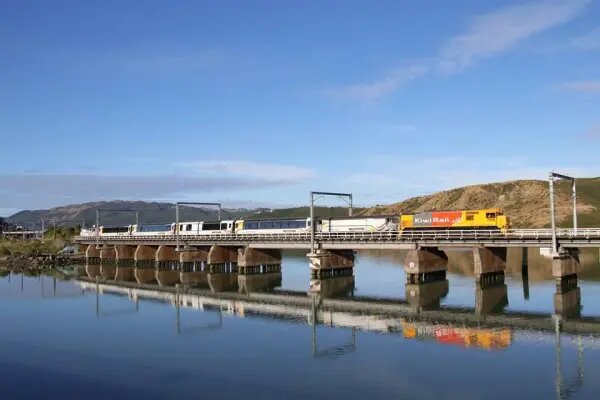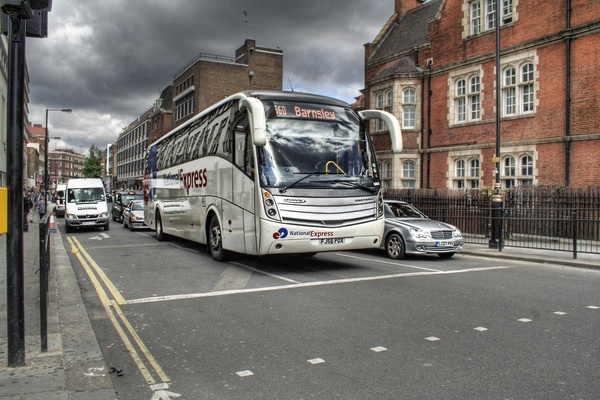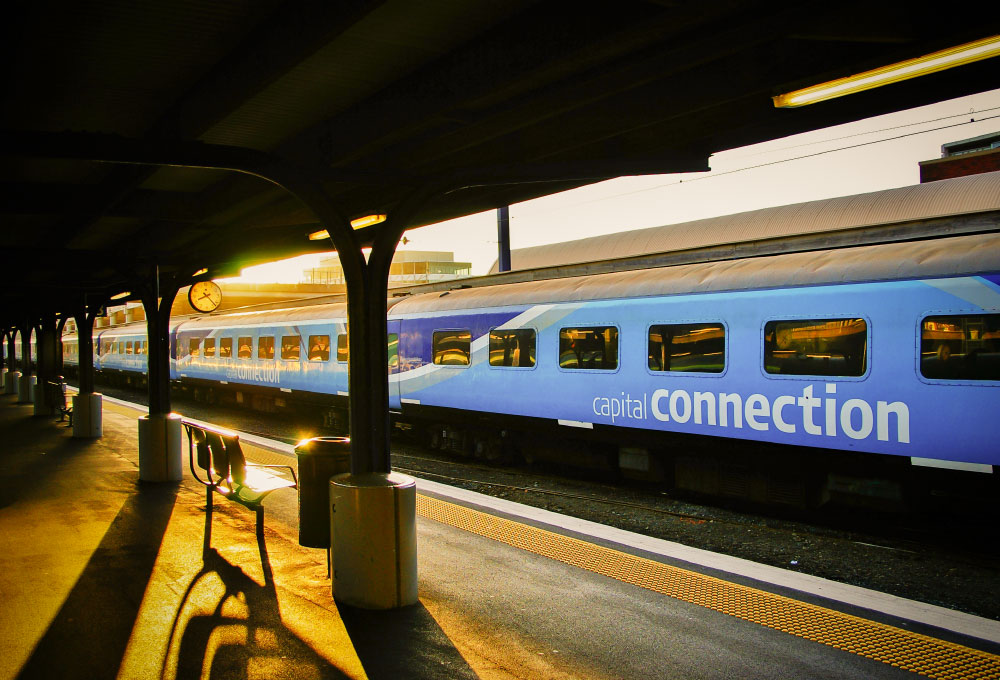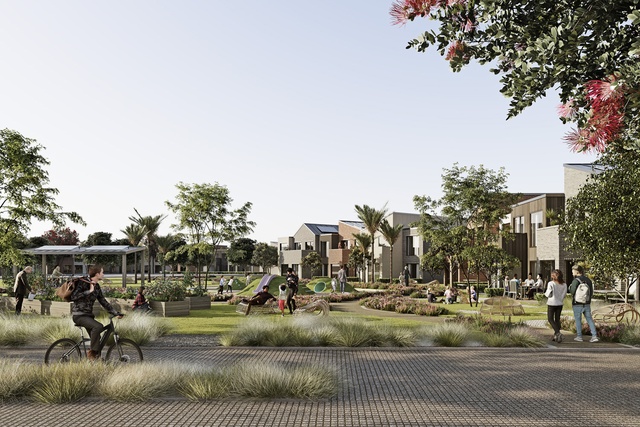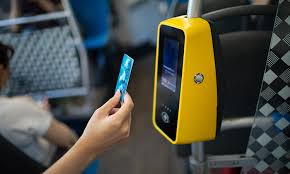With the recent Government's parliamentary Transport and Infrastructure Committee inquiry into the future of inter-regional passenger rail in Aotearoa New Zealand, raises the question, what is the future of regional, inter-regional and long distance 'Inter-City' style passenger rail services in the country.
Background
With the demise of the national regional passenger rail network by 1978 and 'branded' inter-regional and long distance passenger train services like 'The Geyserland' between Auckland, Hamilton and Rotorua, 'The Kaimi Express' between Auckland, Hamilton and Tauranga, 'The Bay Express ' service between Wellington, Palmerston North, Hastings and Napier in 2001, 'The Southerner' between Christchurch, Dunedin and Invercargill in 2002 and 'The Northerner' over night service between Auckland, Hamilton, Palmerston North and Wellington in 2004, there has been a lot of discussion and campaigning for the re-introduction of these services.
Currently, there are only three long distance passenger train services operating, being the ''Northern Explorer' services between Auckland, Hamilton, Palmerston North and Wellington, the 'Coastal Pacific' services between Christchurch and Picton and the 'TranzAlpine' services between Christchurch and Greymouth on the South Island's west coast.
These passenger train services are marketed as premium 'scenic' tourist train services to international tourists due to their 'scenic' designed passenger and open air 'viewing' carriages, operating as limited stop services.
Whilst domestic travelers can travel on these services, the fares are expensive and schedules are seasonal especially the 'Coastal Pacific' train service.
The current three long distance passenger train services operate as non subsidised 'book and travel' operated by the government owned 'for profit' national rail operator – Kiwirail Holdings Ltd trading as Kiwirail, which is also the operator of the national rail network (track, bridges, tunnels, most railway stations, signalling, train control) operating as a 'closed access' network.
Besides the three long distance passenger train services, there are three 'branded' regional and inter-regional passenger train services, operating as subsidised 'turn up and go' commuter style services, funded by their respective regional council's, through rate payer funding, with additional funding from the government's NLTF (National Land Transport Fund) with timetables to match, being:
- the 'Capital Connection' service between Wellington and Palmerston North
- the 'Wairapara Connection' services between Wellington, Featherston and Masterton
- 'Te Huia' services between Hamilton and Auckland
What is the future of long distance 'Inter-City' passenger rail services
With the Government planning to move to zero emissions by 2050 and the increasing availability of sustainable environmentally friendly fuel options, increasing population growth coupled with improvements in train motive power technology, the question is, why can't there be a fleet of long distance 'Inter-City' passenger train services in Aotearoa New Zealand?
There has been calls over the years, more so recently, for the re-establishment of regular seven day per week, long distance 'Inter-City' passenger trains between Auckland and Wellington for both day and night services and day services between Christchurch, Dunedin and Invercargill or between Picton, Christchurch and Dunedin.
If new long distance passenger 'Inter-City' train services are re-established, they would have to compliment the re-introduced national regional passenger train services using one of the following tiered operations:
a. Tier 1
- operate the existing 3 long distance 'scenic' passenger trains as 'limited stop' services using a commercial non-subsidised 'book and travel' business model, between Auckland and Wellington, Christchurch and Picton and Christchurch and Greymouth 364 days per year
- operate regional and inter-regional passenger trains as 'all stops' services using a non commercial subsidised 'turn up and travel' business model, 365 days per year, as outlined in the new Regional Passenger Rail Network concept
b. Tier 2
- operate the existing 3 long distance 'scenic' passenger trains as 'limited stop' services using a commercial non-subsidised 'book and travel' business model, between Auckland and Wellington, Christchurch and Picton and Christchurch and Greymouth 364 days per year
- operate two or possibility three dedicated 'all stops' long distance 'Inter-City' passenger train services using a commercial non subsidised 'book and travel' business model, between Auckland and Wellington, Christchurch Dunedin and Invercargill and possibly between Picton, Christchurch and Dunedin, 365 days per year
- operate regional and inter-regional passenger trains as 'all stops' services using a non commercial subsidised 'turn up and travel' business model, 365 days per year, as outlined in the new Regional Passenger Rail Network concept
c. Tier 3
- operate the existing 3 long distance 'scenic' passenger trains as 'limited stop' services using a commercial non-subsidised 'book and travel' business model, between Auckland and Wellington, Christchurch and Picton and Christchurch and Greymouth 364 days per year
- operate an 'overnight' passenger trains 'limited stop' services using a commercial non-subsidised 'book and travel' business model, between Auckland and Wellington 364 days per year
- operate two or possibility three dedicated 'all stops' long distance 'Inter-City' passenger train services using a commercial non subsidised 'book and travel' business model, between Auckland and Wellington, Christchurch Dunedin and Invercargill and possibly between Picton, Christchurch and Dunedin, 365 days per year
- operate regional and inter-regional passenger trains as 'all stops' services using a non commercial subsidised 'turn up and travel' business model, 365 days per year, as outlined in the new Regional Passenger Rail Network concept
What type of trains would be used for long distance 'Inter-City' train travel
The type of trains that could be used for long distance 'Inter-City' travel, would be self powered, bi-directional 4 to 5 air conditioned carriage train sets consisting of a 'premium' carriage with 3 abreast (2 aisle 1) seating, cafe carriage with special needs seating and 2 to 3 'standard' carriages with 4 abreast (2 aisle 2) seating, with ergonomically designed seats for greater comfort with seat back drop down tables, power/USB points and onboard wifi.
Motive power for these train sets would use sustainable, environmentally friendly fuels between Christchurch, Dunedin and Invercargill and possibly between Picton, Christchurch and Dunedin and train sets operating between Auckland, Hamilton, Palmerston North and Wellington using dual voltage (25Kva and 1500 DC) electric sets.
Who would own the long distance passenger 'Inter-City' rail fleet
Like with the proposed re-introduction of regional and inter-regional passenger trains, the new long distance passenger 'Inter-City' passenger train fleet would be on a DBFMO (design, build, finance, maintain and operate) style of public/private partnership on a 20 to 25 year agreement.
The DBFMO agreement, besides the designing, building, shipping and maintenance of 10 train sets, would include training of train crews and maintenance personal, 5 yearly train refurbishments and technology upgrades over the duration of the agreement. The agreement would have a 'buy out' option should the government decide to buy out the agreement.
Ideally, the DBFMO partnership for the long distance passenger 'Inter-City' passenger train fleet should be the same partnership supplying the regional and inter-regional passenger train fleet, to prevent duplication of maintenance facilities, staffing, etc.
The ownership of the long distance passenger 'Inter-City' passenger train fleet, would be jointly owned by the reformed New Zealand Railways Corporation a statutory corporation and the DBFMO partnership through the creation of a joint venture partnership entity, with the government contributing between 20-30% of the estimate cost of introducing the fleet.
How will long distance 'Inter-City' passenger train services be funded
The long distance passenger 'Inter-City' passenger train services would operate as non subsidised, 'book and travel' services using a 'not for profit' business model with revenue from fares collected, to cover their operating costs.
If any long distance passenger 'Inter-City' passenger train service operates on any route/s, that is providing essential rural community connections, would receive funding from the National Public Transport Agency, as they would be deemed to be essential service/s.
What are the issues in re-establishing long distance passenger trains
There are three main issues in re-establishing long distance passenger 'Inter-City' rail services, being:
a. Current operational and commercial model
Like with re-introducing subsidised 'turn up and go' regional and inter-regional passenger rail services, to re-establish non subsidised 'all stops' long distance passenger 'Inter-City' rail services, centres around the current operational and 'for profit' business model of the government owned national rail operator – Kiwirail Holdings Ltd, being both the train and the national rail infrastructure operator of a 'closed access' predominantly single track freight rail network.
In essence, Kiwirail Holdings Ltd (Kiwirail) is acting as the gatekeeper of Aotearoa New Zealand national rail network, making it difficult for any other train operator whether they are heritage, domestic or international, to access the network to operate any 'commercialised' long distance passenger train service/s, unless the government instructs the company to open the national rail network to external train operators.
If this happens, there could be a conflict of interest between Kiwirail the train operator and Kiwirail the rail infrastructure operator. Kiwirail Holdings Ltd business model is to make a profit which includes the rail infrastructure network, putting the rail infrastructure network as a 'for profit' operation, at odds with Aotearoa New Zealand's State Highway network which is 'not for profit' focused, unless the government instructs the company to operate the rail infrastructure network on a 'not for profit' cost recovery business model and train operations on a 'for profit' business model, splitting the company's operations into two 'business' entities, creating confusion to Kiwirail Holdings Ltd business model as a government owned company.
Kiwirail Holdings Ltd has made its business objectives clear, in the company's national rail plan to government, the company wants to be a predominantly rail freight and inter-island ferry operator and is not interested in re-establishing regional, inter-regional and long distance passenger 'Inter-City' passenger train services other than the current three long distance passenger train services as a 'tourism' product.
On the 9th October 2022, the Government announced to retain Kiwirail Holdings Ltd commercial business model as a State Owned Enterprise.
b. Current availability of passenger carriages and locomotives
To re-establish long distance passenger 'Inter-City' train services, depends on the availability of passenger carriages and locomotives.
Besides the current three long distance passenger trains using specifically designed 'scenic' carriages built between 2010-2012 hauled by 44 year old locomotives, the remaining stock of passenger carriages are ex British Rail Mark 2 carriages built in the early 1970's, imported and refurbished in the 1990's to meet Aotearoa New Zealand operating conditions with some being used for the 'Capital Connection' and 'Wairarapa Connection' regional fleets.
Most were rebuilt as 'suburban commuter' styled carriages for locomotive hauled passenger services on the Auckland's metro train network until they were replaced by electric multiple units in 2014.
Of the remaining withdrawn 'suburban commuter' carriages, 12 were refurbished for "Te Huia' and 9 for the 'Capital Connection' passenger fleets.
The remaining small number of withdrawn 'suburban commuter' carriages is not sufficient nor suited to re-establish long distance passenger 'Inter-City' rail services, due to their 'suburban commuter' design and will be nearing their economical life in the early 2030's.
Of the existing locomotive fleet owned by Kiwirail, the older locomotives are being replaced by new freight dedicated locomotives and due to their speeds are not suited for inter-regional and long distance passenger operations.
To re-establish long distance passenger 'Inter-City' rail services, new passenger carriages and locomotives would be required, raising the question, who is going to pay and owned them, as Kiwirail Holdings Ltd has made it clear, they are not interested in operating regional, inter-regional and long distance passenger 'Inter-City' rail services.
c. Stations and other passenger infrastructure facilities
Excluding metro station facilities in the Auckland and Wellington regions, the two inter-regional passenger train services between Hamilton and Auckland, Wellington and Palmerston North and those currently used by the three long distance passenger trains, most of the necessary passenger rail infrastructure like stations, etc on the national rail network would need to be upgraded or rebuilt.
What is the solution
Until there is cross political party support to reform the national rail network as a not for profit, 'open access' sustainable, environmentally friendly national 'steel' highway network connecting the 14 of the 16 local government regions that have rail connectivity and the government's commitment to make the necessary major investments in upgrading the national rail infrastructure, by removing the kinks in the network with deviations, double track where possible, increase passing loops, upgrading tunnels, strengthening bridges, installing network wide high frequency signalling like ETCS 2 (European Train Control System Level 2) or equivalent and train control centres to allow for increase freight and passenger train movements and track speeds across the national rail network, nothing much is going to happen.
The question is not if but when.
It is time to reform rail in Aotearoa New Zealand so lets do it
For back ground history of Aotearoa New Zealand passenger rail services.
For further reading concerning the points raised in this discussion article -
- The future of passenger rail in New Zealand is regional rail
- Light Rail for Branch Lines
- Lets Connect Communities
- Its time for a national public transport network
- CityConnect - the national public transport network
The Future of long distance passenger rail services is Better Passenger Transport New Zealand initiative and supported by Public Transport Forum New Zealand.
If you support the re-establishment of long distance 'Inter-City' passenger trains services and for the government to reform and make the necessary investment to upgrade the national rail network into an 'open access', sustainable, environmentally friendly, strategic national 'steel' highway network, have your say or become proactive by getting involved in local better public transport campaign groups.
